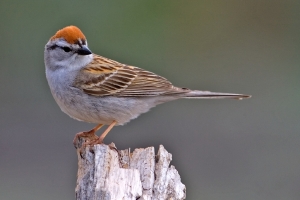Dr. Olivia Judson, an evolutionary biologist who has a blog on the New York Times web site, recently asked one of the burning questions of modern science: Did Tyrannosaurus rex have a penis? Or two as some modern lizards do? Or, like most birds, none? (You can read her post here.) Modern birds may know the answer.

We know this question has been keeping you up nights and we’re happy to answer it.
Wait. Not so fast. First we need to set the stage. Five times in the known history of the planet mass extinctions wiped out most forms of life here. The biggest — the Permian-Triassic — happened about 251 million years ago, last Tuesday. (251 mya) The most well-known mass extinction was about 65 million years ago. (65 mya) This was the famous one, the Cretaceous Extinction, probably caused by an asteroid hitting the earth’s atmosphere somewhere above what is now the Gulf of Mexico. The resulting explosion vaporized everything nearby and sent up a cloud of dust so thick that it was decades before the sun shone through again. In the meantime almost all terrestrial life had starved or frozen to death, including the dinosaurs.
Not all life forms were wiped out. Obviously some survived; otherwise insufficient time would have passed for evolution to reach its pinnacle — the blogger.
A few bird ancestors lived through it. Specifically, two “superorders,” the Palaeognathae and the Neognathae. (There will be a test. ) Frankly, we know very little about how they came to exist before the extinction or how they survived it. About all we know for sure is that modern birds came from the two superorders, both of which came from dinosaurs. As Judson tells us, “Birds are more closely related to T. rex than they are to any living form.”
While we are fairly confident that birds evolved from dinosaurs we are not sure from which dinosaurs. One theory holds that birds evolved about 230 mya from Thecodonts. Another argues that birds developed from Theropods 150 mya. (Remember, there will be a test.) Still another asserts that birds arose from Dromaeosaurs about 110 mya. Which is correct depends on how dinosaurs learned to fly. Did they start by soaring or jumping or running after insects? More on that in a later post. Today we are concerned with sex, not flight.
As we discussed in our earlier posts about bird sex, which are here and here, most birds do not have penises. Procreation occurs when male and female birds touch their cloacae to one another. Only a few bird species possess penises. Some waterfowl and large flightless birds do. So do male crocodiles which, like birds, have cloacas; but also have a penis down which sperm passes on the outside, which is true for penis-owning birds as well. Crocodiles too descended from dinosaurs.
We’re close to the answer now. But first, we need to remind you that the fossil record does not answer the question about T-rex’s genitalia. The reason is simple: Except in a few mammals, penises consist of nothing but soft tissue which does not fossilize well. No fossil record of dinosaur penises exists. Which is why we look to birds for the answer.
Here is Dr. Judson’s answer:
The palaeos comprises the big flightless birds such as ostriches, emus, rheas, and cassowaries, as well as kiwis and an obscure (but flying) group of south American birds, the tinamous; the neos covers everything else. The palaeos have penises; like crocodiles, they keep them tucked into their cloacae. Again like crocodiles, the organ has an external groove for sperm. What’s more, the lineage leading to the other endowed birds, the ducks, geese, and swans, appears to have split off from that of the other neos relatively early.
This strongly suggests that the ancestor of all birds had a penis, and that at some point early in the evolution of the neognathous birds, the penis got lost.
Now you can get some sleep.
__________________
Part I of this series.
Part II of this series




